I was, for quite a few years, a horror-novel junky. I started young, around 10 or 11, and though many other kinds of books eventually made their way into my readerly slipstream, and I’ve broadened the definition to include works that twist as much as they terrorize, I’ve happily never kicked the habit. Horror gets to the heart of it (sometimes quite bloodily) and I wouldn’t trade its dark lessons learned for those of any other genre. In these days of national and international turmoil and too much terrible mortal trauma, horror seems more important than ever for punching through to the deep what’s and possible why’s of all these calamities. What follows is a description of some of the books I started the horror journey with and some I read in and around the writing of my own recent foray into the territory, In the House in the Dark of the Woods.
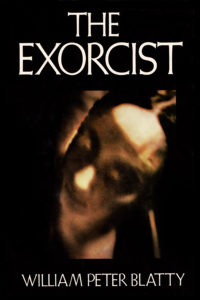
The Exorcist, by William Peter Blatty
I was too young to be reading this book but read it anyway and paid the consequences. That year we lived in a town in Connecticut and the early dusk of autumn too often caught me far from home either on foot or on my bicycle as darkness descended on the extremely dense woods, and the moss on the omnipresent crumbling stone walls turned black, and crows and then bats began to swoop. Fancying myself adequately instructed in the ways of exorcists, for having read about one (never mind that his results were, well, not so good), I would go along the road doing things like saying the Lord’s Prayer, which I knew imperfectly, and more than once turned sticks into crosses that I would wave at the imagined (but was it imagined?) threat. Sure the main events of The Exorcist go down in a famously icy room in Georgetown, many miles from the poorly lit, twisting streets of that Connecticut town, but the book made clear that bad stuff wasn’t picky about place, and I knew that if I let my guard down some demon would get me. More than once I wept.
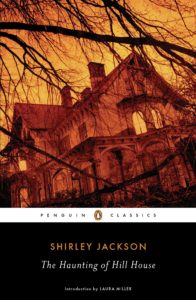
The Haunting of Hill House, by Shirley Jackson
Jackson’s great classic was one of my first introductions to the notion that madness might be more frightening than ghostly activity. Jackson’s main character, Eleanor Vance, part of a haunted house investigation crew, gets psychically absorbed into Hill House, there is no question about that, but because I found it so disturbing, the more I read, the more I wanted it to be the house that was opening its jaws to lean forward and bite and not Eleanor who was diving in. After all, there are things you can do (run), or at least try to do (ineffective garlic or malfunctioning crosses anyone?), when the monsters come out, but what can you do when they come straight out of you. Jackson was too marvelously poker-faced about her intentions to be of any help to a mind not yet warmed up to the idea that ambiguity of intent and result was interesting. I would go on to read The Turn of the Screw and Kafka’s allegories and many other works that offered this kind of character/context blurring, but The Haunting of Hill House was the first. While I loved the effect, I also wasn’t sure I liked it. The implications were too terrifying.
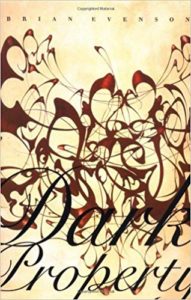
Dark Property, by Brian Evenson
Evenson’s short novel, which brilliantly brings obsolete words that have fallen out of the dictionary back from the dead, is about a woman trying to reach a resurrection cult somewhere in the desert. She is being pursued by horror, and heading towards it, but arguably her worst nightmare is what she is carrying on her back. I won’t say what that is but I will note that in Dark Property Evenson plays the game of “what is your worst nightmare?” with utmost severity.
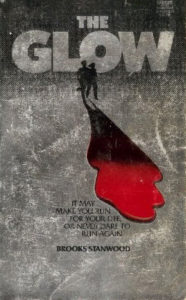
The Glow, by Brooks Stanwood
I was a jogging-mad 7th grader in the autumn of 1980 when a paperback copy of The Glow came my way. I already had pages into the thousands of H.P. Lovecraft, Stephen King, Peter Straub and William Peter Blatty under my belt, but if running, or wishing you could run, of a different variety was common in their work, I had never read something scary that put jogging front and center. I have little doubt that this collaborative effort, published under a pen name, by Howard Kaminsky and Susan Stanwood Kaminsky, and clearly meant to capitalize on a cultural craze of the moment (remember, those of you around in the late 70s and early 80s, all those people in puffy shorts and baggy tank tops out beating their Nikes and New Balances into mush?) might not have held up. But to my 12-year-old self, the creep of realization that all this running was going to end very badly most definitely got the job done.
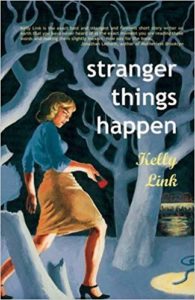
Stranger Things Happen, by Kelly Link
Link’s first collection is not, strictly speaking, horror, though there are many things in it that are very frightening. Take the first story, “Carnation, Lily, Lily, Rose,” which is narrated from the afterlife by a man who can’t remember his wife’s name. Sounds like a minor affliction, maybe, but Link adroitly taps his dilemma into the deepest existential dread. The often crippling, wounding, maiming fairy tales of Hans Christian Andersen are put through Link’s blender throughout the book, and while a character who collects artificial noses may seem pleasantly quirky without context, with context, and as Link’s sentence tendril ever more tightly around you, it may, also, not. Check out Magic for Beginners if you catch the Link bug and want some more deep unsettling. Check all of her books out…

Revenge, by Yoko Ogawa (translated from the Japanese by Stephen Snyder)
It is hard to decide whether it’s the threatening ambience or the instruments of torture or the weird vegetables or the fact that everything in these tales is interconnected (making the reader feel like a frightening maze has been entered) that is most goose pimple inducing about this collection. Likely is a little of all these elements. Ogawa is a contemporary master and deserves to be far better known on these shores. There is no better place to start an exploration of her particular brand of darkness than with Revenge. I’ve read it twice.

That Book with the Scary Clown on the Cover that My Mother Tore Off
I remember nothing about the book except for the leering clown on the cover. I told my mother the book wasn’t that scary but that the cover was giving me nightmares. She tore it off, tossed it and handed the book back. Later that night I dug the cover out of the trash. Problem not solved.

















